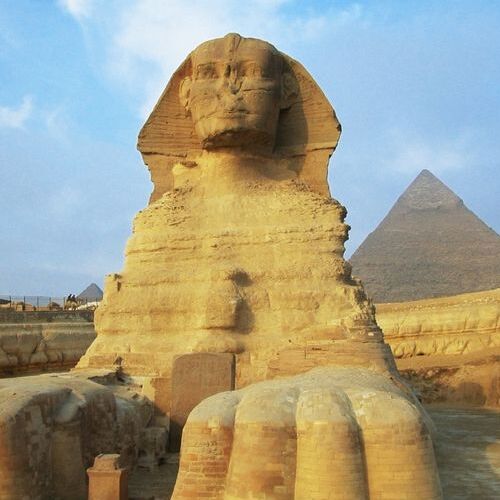No other nation in the world says ‘Welcome’ as often as the Egyptians, and every time, they mean it. While the ancient civilization of Egypt continues to amaze, contemporary Egyptians are equally remarkable.
Saqqara {Sakkara}
Saqqara: The Timeless Necropolis and Birthplace of Pyramid Architecture
Saqqara, also spelled Sakkara, is one of Egypt’s most important and extensive archaeological sites, located around 30 kilometers south of Cairo. It served as the main necropolis for Memphis, the ancient capital of Egypt, and holds the remains of thousands of years of Egyptian history, from the earliest dynasties to later periods. Saqqara is most famous for the Step Pyramid of Djoser, the world’s first large-scale stone construction and a revolutionary structure that changed the course of architectural history in ancient Egypt.
The Step Pyramid, designed by the brilliant architect Imhotep during the 3rd Dynasty for Pharaoh Djoser, is the centerpiece of Saqqara. This pyramid, which was built around 2670 BCE, is not only a tomb but also a symbol of the beginning of the pyramid-building tradition that would culminate in the construction of the Great Pyramids of Giza. Rising in six distinct steps, the pyramid marked a dramatic shift from the traditional flat-roofed mastabas that had been used for royal burials before. Surrounding the pyramid is a vast mortuary complex, with courtyards, temples, and shrines that were used for various religious rituals meant to ensure Djoser’s safe passage into the afterlife.
But Saqqara is much more than just the Step Pyramid. As a vast necropolis, it contains tombs and pyramids from almost every period of ancient Egyptian history. Among the many treasures here are the Pyramid Texts—the oldest religious texts in the world—inscribed in the burial chambers of pyramids belonging to later kings such as Unas and Teti. These texts, filled with spells and incantations, were meant to guide the deceased pharaoh through the afterlife, providing fascinating insights into Egyptian religious beliefs.
Another significant tomb in Saqqara is the Tomb of Mereruka, a high official during the 6th Dynasty. This beautifully decorated mastaba tomb contains incredibly detailed scenes of daily life, showing everything from fishing and hunting to music and dancing, providing a vivid picture of how Egyptians lived thousands of years ago. The intricate carvings and colorful frescoes in this tomb make it one of the most popular and well-preserved non-royal tombs in Egypt.
In addition to royal tombs and pyramids, Saqqara also features the Serapeum, a grand underground burial site for the sacred Apis bulls, which were worshiped as earthly manifestations of the god Ptah. The burial of these bulls, which were mummified and placed in massive granite sarcophagi, was a crucial part of the religious practices in ancient Memphis. The Serapeum, rediscovered in 1850 by French archaeologist Auguste Mariette, is a testament to the enduring religious traditions that spanned centuries.
Saqqara’s importance extends well beyond its ancient history. In recent years, the site has continued to yield incredible archaeological finds. Recent excavations have uncovered well-preserved tombs, statues, and mummies, including stunning collections of artifacts from various periods of Egypt’s past, many of which are still being studied and restored today.
For travelers and historians alike, Saqqara offers a deep dive into the heart of ancient Egypt’s culture, religion, and innovation. Whether you’re exploring the pioneering architecture of the Step Pyramid, marveling at the intricate carvings in the tombs, or wandering through the vast necropolis that holds over 3,000 years of history, Saqqara remains one of Egypt‘s most evocative and historically rich destinations
GIZA Travel Guide



